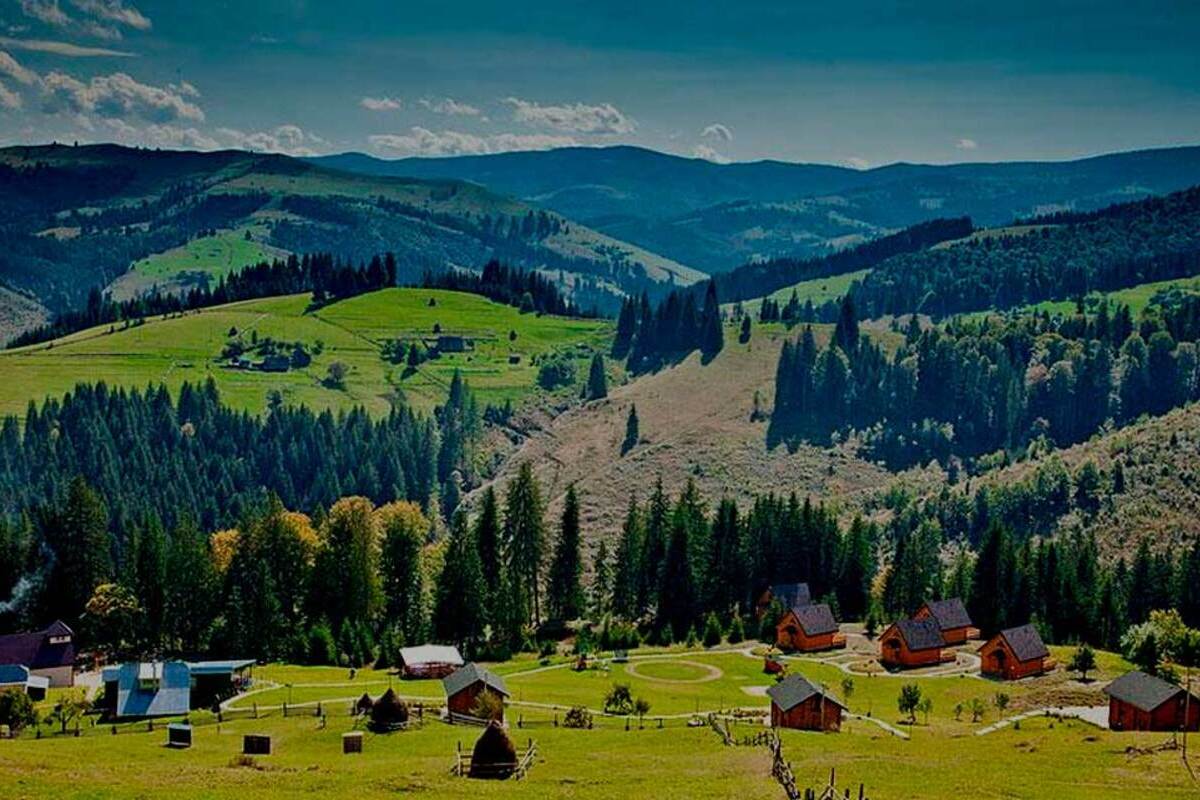Bukovina is a unique region in western Ukraine, admired for the beauty of its mountain landscapes, rich cultural heritage, and the hospitality of its people. It is a land where the traditions of various nations and centuries intertwine harmoniously, creating an unmistakable character. The region is famous for its history, architectural monuments, and remarkable natural sites. Here you can find both ancient monasteries and modern cultural centers, while the local cuisine will surprise even the most demanding gourmets. We present fascinating facts about Bukovina that you may not know.
- The name Bukovina comes from the word “beech,” as in ancient times the region was densely covered with beech forests. This tree became a distinctive symbol of the land and still grows in the mountainous areas. In local culture, the beech is associated with strength and longevity.
- Historically, Bukovina was part of various states, including the Principality of Moldavia, the Ottoman Empire, Austria-Hungary, and Romania. Such a variety of rulers shaped a unique blend of traditions and architecture. The influence of different cultures can be seen in local customs, cuisine, and language.
- Chernivtsi, the administrative center of Bukovina, is often called the “Ukrainian Vienna” for its distinctive architecture and cultural atmosphere. The city is rich in buildings in Art Nouveau, classical, and Baroque styles. Its streets have preserved the charm of old Europe.
- The main architectural jewel of the region is the Residence of Bukovinian and Dalmatian Metropolitans. This complex, built in the 19th century, is listed as a UNESCO World Heritage Site. Today, it houses Chernivtsi National University.
- Bukovina is known as a multinational region where Ukrainians, Romanians, Moldovans, Poles, Jews, Germans, and other peoples live in harmony. Each community has contributed to the cultural and spiritual life of the land. This diversity makes the region especially colorful and hospitable.
- Chernivtsi is home to one of the oldest universities in Ukraine, founded in 1875. It was established during the Austro-Hungarian period and became an important educational and scientific center. The university is renowned for its unique library and archives.
- Bukovina has long-standing embroidery traditions characterized by vivid colors and intricate geometric patterns. Local embroidered shirts are considered among the most beautiful in Ukraine. The patterns often have symbolic meanings and are passed down from generation to generation.
- The region is famous for its musical culture, especially for the use of the trembita, cimbalom, and violin. Local folk melodies often accompany weddings and celebrations. Traditional songs and dances preserve ancient motifs and rhythms.
- Bukovina is home to many monasteries and churches, including the well-known St. Anna Monastery and the St. John the Theologian Monastery in Kitsman. They are not only religious sites but also architectural landmarks. Many are surrounded by picturesque landscapes.
- Bukovina is known for its unique festivals, among which the “Malanka Fest” in Chernivtsi stands out. This vibrant winter celebration features carnival costumes, music, and dancing. Each year it attracts tourists from different parts of the world.
- The nature of Bukovina is extremely diverse, ranging from green plains to the mountain ranges of the Carpathians. There are numerous rivers, lakes, and forests that attract ecotourism enthusiasts. Hiking in the mountains and rafting on the rivers are particularly popular.
- Part of the Vyzhnytsia National Nature Park is located in the region. This area, rich in flora and fauna, is protected by the state. The park is a draw for scientists, photographers, and tourists.
- Bukovina has a rich culinary heritage that combines Ukrainian, Romanian, and Moldovan dishes. Popular meals include mamaliga, banush, stuffed cabbage rolls, as well as various meat and cheese dishes. The local cuisine is notable for its rich flavors and homemade recipes.
- Chernivtsi has preserved an old drama theater built in 1905. Its interiors impress with luxurious Baroque and Rococo decorations. The theater remains an important center of culture and the arts to this day.
- The region has a deep winemaking tradition, especially in the southern part of Bukovina. Grapes of various varieties are grown here to produce aromatic wines. Winemaking has preserved many ancient techniques.
- Bukovina is the birthplace of many prominent cultural figures, including composer Sydir Vorobkevych and writer Yurii Fedkovych. Their works reflect the spirit and character of the region. Their memory is honored with monuments and museums.
- The region has preserved many stone and wooden bridges from the 19th century that are still in use today. They stand as witnesses to history and examples of the engineering skills of past centuries. Some are located in exceptionally scenic areas.
- Bukovina is famous for its rich forests, where mushrooms, berries, and medicinal herbs grow in abundance. Local residents have been gathering these natural treasures for generations. This tradition is an important part of their daily life and economy.
- Bukovina is home to several well-known resorts, including those in Vyzhnytsia and Putyla. These destinations offer not only relaxation but also health benefits thanks to clean air and mineral springs. The mountain landscapes create an atmosphere of peace and inspiration.
Bukovina is a land where the past and present blend harmoniously, creating a unique cultural space. Here everyone can find something special – from historical monuments to incredible natural scenery. The incredible facts about Bukovina show that this region is a true treasure for Ukraine and all of Europe. It inspires, amazes, and leaves unforgettable impressions in the hearts of all who visit it.





